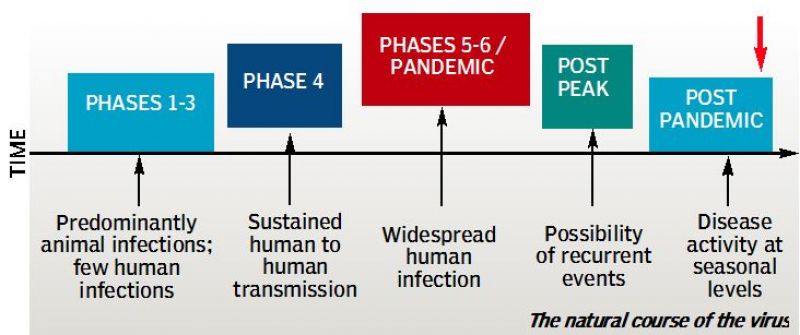Beware of contagious H1N1 virus in air
H1N1 is generally tested in labs that have facilities for the Polimerised Chain Reaction (PCR).

Chennai: Swine flu causing Influenza virus has been one of the most portentous viruses in recent medical history challenging researchers in the laboratories and doctors at clinics while the fatality graph continues to climb.
Virologists, who have been studying H1N1, warn the public to take precautions whenever they are visiting a locality, particularly, districts with lowest minimum temperature where swine flu cases have been reported more. It may be noted that Western districts in Tamil Nadu – Coimbatore and Tirupur – have reported a maximum number of swine flu cases.
“The virus, which is known to be transmitted 20 per cent from cough droplets in the air, and 80 percent through touch, survives for around two days in high temperatures in the external environment, and for over two days on surfaces in cool places,” said Pearly Mathew, a virologist from Vellore. “It becomes extinct within a few hours in hot and dry climates. The virus may enter a human two to three days before the onset of the symptom and stay for a week or so after,” she added.
The constantly mutating, dynamic virus, which is communicable to other persons, is mainly found on surfaces where the hand usually touches; such as cash counters, seats, handrails and switches. “We have been making all efforts to create awareness on the importance of cleaning surfaces and hand washing as per the guidelines given by the Centre for Disease Control (CDC),” said Dr Kulandaisamy, director, department of public health.
Those with uncontrolled diabetes, hypertension, renal ailments and the like, are at a higher risk of developing swine flu once the influenza virus H1N1 enters their body, he added.
Declared by the World Health Organisation as a seasonal influenza, H1N1 is generally tested in labs that have facilities for the Polimerised Chain Reaction (PCR). Stating that the virus cannot be seen through a naked eye or a normal microscope, Dr R. Sundara Raman, head of the department of internal medicine, SIMS, said, “PCR is a sophisticated test which cannot be done in all labs.”
Known to cause a lot of complications in the human body, like respiratory distress and hypoxia, the disease is identified through the viral antigen. “It is found to be more active in certain parts of the state, namely Tiruvallur, Kancheepuram, Vellore, Villupuram, Trichy, Coimbatore and Tirupur, where the travel movement is more,” added Dr Kulandaisamy.
Nothing to do with 'Swine'
In 2009, a new combination - H1N1- originated in Mexico from a swine and contaminated some humans. From then onwards, it has been a human-to-human transmission. Right now, the name Swine Flu has nothing to do with the swine. The human also has many combinations of these viruses. When they come in contact with animals, which have some sort of infection, the two viruses, will form a different combination - either in the human or the animal. Over the years, the combination has stabilised and the World Health Organisation has declared it as ‘Seasonal Influenza’.
The Sneeze Time Bomb
When an individual, with the H1N1 influenza virus, sneezes within an air conditioned room, the virus infects the entire room and stays there for hours as it is not allowed to leave the room as well as because of the low temperatures. It, therefore, spreads to others at a much faster pace than it does in warmer rooms


